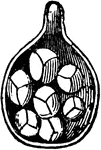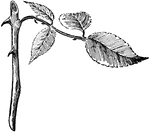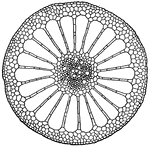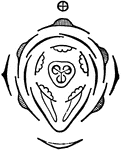Seneca Snakeroot - Stem and Flowers
"Polygala senega of eastern North America. It sends up several stems from hard knotty root-stocks, bearing…

Seneca Snakeroot - the Fruit
"Polygala senega of eastern North America. It sends up several stems from hard knotty root-stocks, bearing…
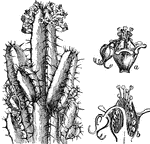
Resin Spurge
The Resin Spurge (Euphorbia resinifera) is a flowering plant that superficially resembles a cactus.…

Extrorse Stamens of Flower of Staff Vine
Extrorse or outward facing stamens of the flower of Hippocratea, a genus of staff vine.
Stamen of Globe Amaranth
Very short filament bearing a single anther-cell; it is open from top to bottom, showing the pollen…

Stamen of Mallow
Stamen of Mallow; the anther supposed to answer to that of Pentstemon pubescens, but the cells completely…
Stamen of Moonseed
Stamen of Moonseed, with anther cut across; this 4-celled, or rather 4-locellate.

Stamen of Pentstemon
Stamen of Pentstemon pubescens; the two-anther-cells diverging, and almost confluent.

Stamens
Stamens of the mint family. Of a Monarda: the two anther-cells with bases divergent so that they are…

Stem of Young Pine Attached by Peridermium Pini
Illustrated in a stem of young pine attacked by peridermium pini. Peridermium pini is a fungus that…
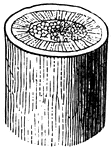
Woody Stem
The central part of the stem is the pith, then is the cellular tissue and finally the bark.
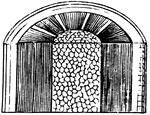
Woody Stem
The central part of the stem is the pith, then is the cellular tissue and finally the bark.

Strawberry Flagellum
"In botany, a runner; a weak, creeping shoot sent out from the bottom of the stem, and rooting and forming…

Tetratheca
"Tetratheca hirsuta. 1. the stamens; 2. the pistil, with one of the cells laid open." -Lindley, 1853

Sow Thistle - Stem with Heads, Basal Leaves, Flower, Achene with Pappus
"A plant of the genus Sonchus, primarily S. oleraceus, a weed of waste places, probably native in Europe…

Toddalia
"Toddalia floribunda. 1. a flower; 2. a pair of carpels, one of which shows its ovule; 3. fruits; 4.…
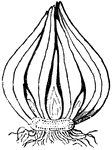
Tulip
This illustration shows a verticle section of the bulb of te tulip, showing its stem (a) and buds (b,…
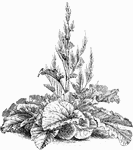
Rheum Undulatum
A plant with dense amounts of leaves. The stems grow up to 5 feet, and are commonly found in Siberia.
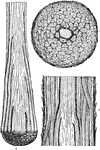
Brazilian Vellozia
"Sections of the stem of a Brazilian Vellozia; 1. transversely; 2, 3. longitudinally." -Lindley, 1853
Venus Flytrap
"Dionaea muscipula. 1. its pistil; 2. a sectional view of it showing the placentae; 3. a seed; 4. the…

Viviania
"Viviania crenata; 1. a flower; 2. a section of the ovary; 3. stamens and ovary." -Lindley, 1853
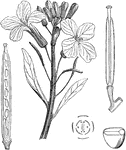
Aegean Wallflower
"Cheiranthus cheiri; 2. its stigma; 3. the same with one valve off; 4. a cross section of a seed; 5.…

White Star
"Eriostemon myoporoides. 1. a complete flower; 2. the ovary, seated in a cup-shaped disk, surrounded…
